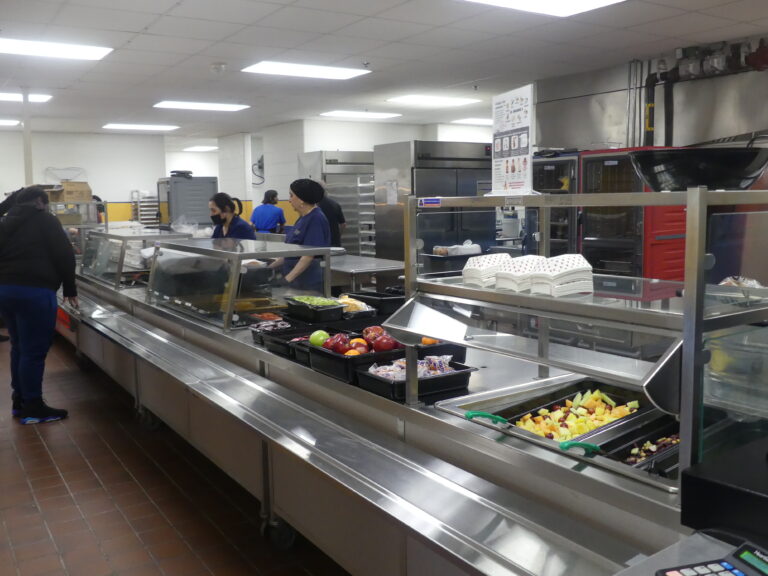A controversial topic in modern day government, recreational marijuana has been legal in Colorado starting in 2012. There, the medical use of marijuana has been legal since 2001. In the past three years, you have probably heard something on the matter, considering it is not recent news.
It has been popular for decades. Woodstock, although a music festival, was fueled by weed back in 1969. American society’s fascination with marijuana has gone back and forth between sides, the debate switching between whether or not the substance is acceptable both socially and legally. There are still those who oppose this law and everything that falls under it, however there is no ignoring the fact that Colorado has had positive changes in its time since legalization.
Movies revolving around teenage stoners and those like “Half-baked” have fueled the fire that keeps the controversy hot. Even scenes in popular, non-based television shows have included references to the recreational drug, “How I Met Your Mother,” among them. Other shows have based their entire plots around the distribution of marijuana, including the series “Weeds.”
Cultural effects not only extend to television and the big-screen but also events and activities in Colorado related to marijuana aspects. Events such as “Sushi and Joint Rolling” is just one of the many events hosted in Colorado. We are accustomed to fairs and festivals with amusement park rides and carnival games but Colorado has marijuana and hemp festivals, with awards and marijuana-infused snacks.
As popular as seen on TV and executed in fairs and festivals, marijuana remains to be recreationally and medically illegal in the majority of the United States. States including Colorado, Oregon, Washington state, and Alaska are the few with laws permitting recreational marijuana usage to anyone within state limits. Massachusetts, California, and New York are among states where the medical use of marijuana is legal, while states like Tennessee and Texas are two of many with the only law regarding marijuana is the one where it is illegal in all forms.
In Colorado, especially, the weed business is booming. The first year alone, 148,000 pounds of cannabis flowers were sold. Later the Marijuana Enforcement Division said 700 million dollars worth of medical and recreational marijuana was sold. 386 million of that was made from medical marijuana, while 313 million was made from the recreational use. Included in the sales were 50 million pot-edibles, such as THC-infused candy and drinks.
Sellers and growers are not the only ones benefiting off of the sales. 12,811,437 dollars were collected in marijuana taxes, licensing, and fees, meaning the government got 12,811,437 dollars richer. As of Jul. 2015, 826,146 dollars have been distributed at jurisdictional level, out of the almost 13 million. Because of the success in sales and revenue, marijuana prices have decreased by 40 percent. Formerly ranging from 50-75 dollars, units are now priced ranging from 30-45 dollars. This price decrease will spark an increase in sales, because people will be more inclined to buy cheaper weed, and continue to purchase it regularly.
The economy in Colorado is blossoming, being named the number one fastest growing economy by Business Insider, which is extremely well considering it is located in one of the most severely damaged economy-stricken first world countries. Jobs are becoming more and more plentiful, and the government is bringing in so much tax revenue, that they can put it into schools and programs, ironically, against the use of marijuana in youth.
Since the unemployment rate is down to four percent as of Apr. 24, 2015, jobs must go somewhere other than dispensaries and growers. Jobs have gone into hotel business along with other tourist hot-spots, like restaurants and amusement attractions. More customers visit these places for the specific reason of legal marijuana. The more customers there are, the more jobs are required to successfully handle all of the consumers.
In 2011, before the legalization, the unemployment rate was more than double than it is now. An 8.6 percent compared to today’s exact 4.2 percent. This although not all stemmed from, but mostly, is from the marijuana business.
The government has taken the majority of taxes, revenues from the industry, and distributed it amongst the local governments. The whopping 28 percent tax rate on sales have made the Colorado government rich and powerful, more so than usual. But, where are the rest of taxes going if not to local governments? The rest of the taxes collected go into programs and documents showing the risks of marijuana in youth and pregnant or breastfeeding women. The programs in schools extend to alcohol and prescription drug abuse prevention, however.
The government created the School Based Substance Abuse Prevention and Intervention, (SAPI) that funds schools, non-profit organizations and community based health organizations. These findings are meant to improve the health behaviors in youth regarding drugs, legal or not, and alcohol. After a long list of demonstrations an organization must show is approved, SAPI will fund the organization, courtesy of the marijuana tax dollars. This may or may not have contributed to the significant drop in teen marijuana use in the state, significantly.
The business life of a pot-grower or dispenser is not all big profits and easy money. These workers face hardships that come along with their workplaces and independent businesses. Starting with their grow houses, trouble usually comes early on in a business. The unusually low industrial vacancy rate of 3.1 percent is making grow houses a rare commodity.
A recreational retailer also must get a retail license, which is an extensive process with inspections and applications. Marijuana products sold in retail, must also comply with a list of regulations. The time it takes to get to the point where you are a retail marijuana shop owner or retailer is long and hard — who is to say that they will even grant someone a license or not? If less precautions were taken, more retail marijuana shops would open, the more the already low unemployment rate would drop.
The amount of marijuana legal to cultivate is 1,800 plants, as long as it fits the rules provided by the government. It must also be in a controlled warehouse, and used for the sole purpose of retail. A proposal stated that retailers wanted to double the number of plants allowed be grown at once, but the proposal was denied promptly. The government says they have this limit, this “production cap”, so that growers do not grow more than they are allowed to sell, nor too much that there will be too many overgrown warehouses, and the substance would no longer be an exclusive substance, if it became too abundant.
On top of all of the growing and dispensary problems and long processes, once they are in business, making a living, the bank denies their deposits. Due to federal tax rules, dispensaries and growers are unable to put their profits in the bank. Groups pushing to have “pot-specific credit unions” were stalled when the federal government went against the idea that would open so many new opportunities, market and job wise. The existing banks or pot specific banks could be significantly more beneficial, to not only growers and dispensers, but the banking system also.
A problem that does not involve a seller or grower, but the consumer of the product is the ingestion of marijuana infused food or drink products by a curious child. Advocacy groups have been working to put a ban on pot edibles due to the hospitalization of several children, brought in with the effects of THC, the substance in marijuana responsible for the psychological effects. This is a problem since the average adult is obviously much larger than a small child, the effects would become more apparent and possibly harmful in a child. This is not the law’s fault, however. Irresponsible parents, leaving their marijuana products laying around are the reasons that children so often ingest them.
The marijuana jurisdiction in the government already regulates the amount of THC within each pot edible. 100 mg is allowed in each item’s serving. The amount of THC a person has in their system will also decide if the person is impaired enough so, that driving or operating machinery is not safe. These regulations, rules, and punishments are very similar to those of alcohol.
‘Colorado, though not the first to do so, has, by legalizing recreational marijuana, may have paved the road for the rest of America. States like Nevada have taken a large influence by Colorado, and will take the state’s current law and government to legalize their marijuana. Senator Patricia Farley likes and takes notice of the Colorado tourism and economy boost. “I think we can benefit from it”, she says in an interview back in May. She also believes that medical and recreational marijuana will do very well, especially in Nevada.
Arizona, California, Maine, Nevada, and the District of Columbia are all predicted to legalize marijuana, recreationally, by 2016.
Hyperlink titles, authors, and published in a suggested reading list.
“Colorado Economy Continues Upward Trend Halfway through 2015.” – The Denver Post. Web. 13 Oct. 2015. <http://www.denverpost.com/business/ci_28492807/at-2015-midpoint-colorado-economy-continues-upward-trend>
“Growth Industry: Nevada Lawmakers Get up-Close View of Colorado’s Pot Business.” LasVegasSun.com. N.p., Jan. 2015. Web. 13 Oct. 2015. <http://lasvegassun.com/news/2015/may/01/growth-industry-nevada-lawmakers-get–close-view-c/>
“Marijuana &Amp; Colorado’s Economy – Marijuana Industry Group.” Marijuana Industry Group. Web. 13 Oct. 2015. <http://marijuanaindustrygroup.org/category/economy/colorado-economy/>
“Marijuana &Amp; Colorado’s Economy – Marijuana Industry Group.” Marijuana Industry Group. Web. 13 Oct. 2015. <http://marijuanaindustrygroup.org/category/economy/colorado-economy/>
“The Marijuana Legalization Votes That Will Matter In 2014.” Time. Time, n.d. Web. 13 Oct. 2015. <http://time.com/3433257/marijuana-pot-legalization-2014/>
“Marijuana Sales Boosts Colorado’s Economy.” msnbc.com. NBC News Digital, n.d. Web. 13 Oct. 2015. <http://www.msnbc.com/the-cycle/watch/marijuana-sales-boosts-colorado-s-economy-380231235879>
“Riding The Tourism High of Legal Marijuana – CBS 2 News – Marijuana Industry Group.” Marijuana Industry Group. N.p., 2015. Web. 13 Oct. 2015. <http://marijuanaindustrygroup.org/2015/04/riding-the-tourism-high-of-legal-marijuana-cbs-2-news/>
“State Of Pot In Colorado A Year After Marijuana Legalization.” Tech Times RSS. N.p., Jan. 2015. Web. 13 Oct. 2015. <http://www.techtimes.com/articles/36274/20150301/state-of-pot-in-colorado-a-year-after-marijuana-legalization.htm>
“That Time We Legalized Marijuana: 10 Defining Moments in the Recreational Era.” The Cannabist. Web. 13 Oct. 2015. <http://www.thecannabist.co/2014/02/06/time-legalized-marijuana-10-defining-moments-january-2014/4098/>
“A Year After Legalizing Weed, Colorado Hasn’t Gone To Pot | Mother Jones.” Subscribe to Prashanth Kamalakanthans RSS. Web. 13 Oct. 2015. <http://m.motherjones.com/politics/2015/01/colorado-legal-marijuana-charts-statistics>




